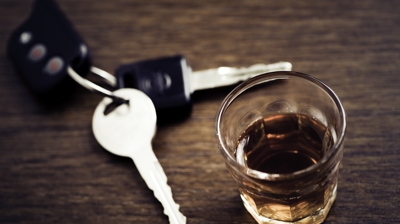
Commercial Driver's License (CDL) Disqualification
CDL Holder Disqualification & Penalties in Colorado
If you have a commercial driver’s license (CDL) in Colorado, the consequences of a driving-related offense could cost you your job. In addition to the penalties you could face following a conviction – which may include jail time, fines, and probation – you risk having your commercial driving privileges revoked temporarily or permanently. This is the case even if you weren't driving a commercial motor vehicle (CMV) when you were arrested.
If you are convicted of a "disqualifying offense," you will be disqualified from operating a CMV. For a first offense, you will lose your CDL privileges for one year. For a second offense, you will face lifetime disqualification.
The following are considered "disqualifying offenses" in Colorado:
- Being convicted of DUI or DWAI
- Committing a felony using a motor vehicle
- Leaving the scene of an accident
- Negligently causing the death of another person while driving a CMV
There are also "serious offenses" to be aware of, which include:
- Committing any traffic violation in which a fatality is involved
- Driving a CMV without a CDL
- Following another vehicle too closely
- Improper lane changes
- Reckless driving
- Traveling 15 miles per hour or more over the speed limit
If a CDL holder is convicted of two of the above offenses over a three year period, a first offense will result in a 60-day license revocation, and a second offense will result in a 120-day license revocation.
Have you been arrested for a disqualifying offense in Colorado? Contact our Denver CDL attorneys at the Orr Law Firm today to learn more about your options.
§ 383.51 Disqualification of Drivers
A driver or holder of a CDL who is disqualified must not drive a CMV. An employer must not knowingly allow, require, permit, or authorize a driver who is disqualified to drive a CMV. A driver is subject to disqualification sanctions if the holder of a CDL drives a CMV or non-CMV and is convicted of applicable violations.
Determining First and Subsequent Violations
For purposes of determining first and subsequent violations of the offenses specified in this subpart, each conviction for any offense listed in Tables 1 through 4 to this section resulting from a separate incident, whether committed in a CMV or non-CMV, must be counted.
Reinstatement After Lifetime Disqualification
A State may reinstate any driver disqualified for life for offenses described in paragraphs (1) through (b)(8) of this section (Table 1 to §383.51) after 10 years if that person has voluntarily entered and successfully completed an appropriate rehabilitation program approved by the State.
Any person who has been reinstated in accordance with this provision and who is subsequently convicted of a disqualifying offense described in paragraphs (b)(1) through (b)(8) of this section (Table 1 to §383.51) must not be reinstated. Colorado currently does not allow CDL drivers to reinstate off of a lifetime disqualification.
Disqualification for Major Offenses
Table 1 to §383.51 contains a list of the traffic offenses and periods for which a driver must be disqualified, depending upon the type of vehicle the driver is operating at the time of the violation, as follows:
| Table 1 to §383.51 | |||||
| If a driver operates a motor vehicle and is convicted of: | For a first conviction or refusal to be tested while operating a CMV, a person required to have a CDL holder must be disqualified from operating a CMV for | For a first conviction or refusal to be tested while operating a non-CMV, a CDL holder must be disqualified from operating a CMV for | For a first conviction or refusal to be tested while operating a CMV transporting hazardous materials required to be placarded under the Hazardous Materials Regulations (49 CFR part 172, subpart F), a person required to have a CDL and CDL holder must be disqualified from operating a CMV for | For a second conviction or refusal to be tested in a separate incident of any combination of offenses in this Table while operating a CMV, a person required to have a CDL and a CDL holder must be disqualified from operating a CMV for | For a second conviction or refusal to be tested in a separate incident of any combination of offenses in this Table while operating a non-CMV, a CDL holder must be disqualified from operating a CMV for |
| (1) Being under the influence of alcohol as prescribed by State law. | 1 year | 1 year | 3 years | Life | Life |
| (2) Being under the influence of a controlled substance. | 1 year | 1 year | 3 years | Life | Life |
| (3) Having an alcohol concentration of 0.04 or greater while operating a CMV | 1 year | Not applicable | 3 years | Life | Not applicable |
| (4) Refusing to take an alcohol test as required by a State or jurisdiction under its implied consent laws or regulations as defined in §383.72 of this part. | 1 year | 1 year | 3 years | Life | Life |
| (5) Leaving the scene of an accident. | 1 year | 1 year | 3 years | Life | Life |
| (6) Using the vehicle to commit a felony other than a felony described in paragraph (b)(9) of this table. | 1 year | 1 year | 3 years | Life | Life |
| (7) Driving a CMV when, as a result of prior violations committed operating a CMV, the driver’s CDL is revoked, suspended, or canceled, or the driver is disqualified from operating a CMV. | 1 year | Not applicable | 3 years | Life | Not applicable |
| (8) Causing a fatality through the negligent operation of a CMV, including but not limited to the crimes of motor vehicle manslaughter, homicide by motor vehicle and negligent homicide. | 1 year | Not applicable | 3 years | Life | Not applicable |
| (9) Using the vehicle in the commission of a felony involving manufacturing, distributing, or dispensing a controlled substance. | Life-not eligible for 10-year reinstatement. | Life-not eligible for 10-year reinstatement. | Life-not eligible for 10-year reinstatement. | Life-not eligible for 10-year reinstatement. | Life-not eligible for 10-year reinstatement. |
Disqualification for Serious Traffic Violations
Table 2 to §383.51 contains a list of the offenses and the periods for which a driver must be disqualified, depending upon the type of vehicle the driver is operating at the time of the violation, as follows:
| Table 2 to §383.51 | ||||
| 1Any individual who provides proof to the enforcement authority that issued the citation, by the date the individual must appear in court or pay any fine for such a violation, that the individual held a valid CDL on the date the citation was issued, shall not be guilty of this offense. | ||||
| If the driver operates a motor vehicle and is convicted of: | For a second conviction of any combination of offenses in this Table in a separate incident within a 3-year period while operating a CMV, a person required to have a CDL and a CDL holder must be disqualified from operating a CMV for | For a second conviction of any combination of offenses in this Table in a separate incident within a 3-year period while operating a non-CMV, a CDL holder must be disqualified from operating a CMV, if the conviction results in the revocation, cancellation, or suspension of the CDL holder’s license or non-CMV driving privileges, for | For a third or subsequent conviction of any combination of offenses in this Table in a separate incident within a 3-year period while operating a CMV, a person required to have a CDL and a CDL holder must be disqualified from operating a CMV for | For a third or subsequent conviction of any combination of offenses in this Table in a separate incident within a 3-year period while operating a non-CMV, a CDL holder must be disqualified from operating a CMV, if the conviction results in the revocation, cancellation, or suspension of the CDL holder’s license or non-CMV driving privileges, for |
| (1) Speeding excessively, involving any speed of 24.1 kmph (15 mph) or more above the posted speed limit. | 60 days | 60 days | 120 days | 120 days |
| (2) Driving recklessly, as defined by State or local law or regulation, including but, not limited to, offenses of driving a motor vehicle in willful or wanton disregard for the safety of persons or property. | 60 days | 60 days | 120 days | 120 days |
| (3) Making improper or erratic traffic lane changes. | 60 days | 60 days | 120 days | 120 days |
| (4) Following the vehicle ahead too closely. | 60 days | 60 days | 120 days | 120 days |
| (5) Violating State or local law relating to motor vehicle traffic control (other than a parking violation) arising in connection with a fatal accident. | 60 days | 60 days | 120 days | 120 days |
| (6) Driving a CMV without obtaining a CDL. | 60 days | Not applicable | 120 days | Not applicable |
| (7) Driving a CMV without a CDL in the driver’s possession1. | 60 days | Not applicable | 120 days | Not applicable |
| (8) Driving a CMV without the proper class of CDL and/or endorsements for the specific vehicle group being operated or for the passengers or type of cargo being transported. | 60 days | Not applicable | 120 days | Not applicable |
Disqualification for Railroad-Highway Grade Crossing Offenses
Table 3 to §383.51 contains a list of the offenses and the periods for which a driver must be disqualified, when the driver is operating a CMV at the time of the violation, as follows:
| Table 3 to §383.51 | |||
| If a driver is convicted of operating a CMV in violation of a Federal, State or local law because | For a first conviction a person required to have a CDL and a CDL holder must be disqualified from operating a CMV for | For a second conviction of any combination of offenses in this Table in a separate incident within a 3-year period a person required to have a CDL and a CDL holder must be disqualified from operating a CMV for | For a third or subsequent conviction of any combination of offenses in this Table in a separate incident within a 3-year period a person required to have a CDL and a CDL holder must be disqualified from operating a CMV for |
| (1) The driver is not required to always stop, but fails to slow down and check that tracks are clear of an approaching train. | No less than 60 days | No less than 120 days | No less than 1 year. |
| (2) The driver is not required to always stop, but fails to stop before reaching the crossing, if the tracks are not clear. | No less than 60 days | No less than 120 days | No less than 1 year. |
| (3) The driver is always required to stop, but fails to stop before driving onto the crossing. | No less than 60 days | No less than 120 days | No less than 1 year. |
| (4) The driver fails to have sufficient space to drive completely through the crossing without stopping. | No less than 60 days | No less than 120 days | No less than 1 year. |
| (5) The driver fails to obey a traffic control device or the directions of an enforcement official at the crossing. | No less than 60 days | No less than 120 days | No less than 1 year. |
| (6) The driver fails to negotiate a crossing because of insufficient undercarriage clearance. | No less than 60 days | No less than 120 days | No less than 1 year. |
Disqualification for Violating Out-of-Service Orders
Table 4 to §383.51 contains a list of the offenses and periods for which a driver must be disqualified when the driver is operating a CMV at the time of the violation, as follows:
| Table 4 to §383.51 | |||
| If a driver operates a CMV and is convicted of | For a first conviction while operating a CMV, a person required to have a CDL and a CDL holder must be disqualified from operating a CMV for | For a second conviction in a separate incident within a 10-year period while operating a CMV, a person required to have a CDL and a CDL holder must be disqualified from operating a CMV for | For a third or subsequent conviction in a separate incident within a 10-year period while operating a CMV, a person required to have a CDL and a CDL holder must be disqualified from operating a CMV for |
| (1) Violating a driver or vehicle out-of-service order while transporting nonhazardous materials. | No less than 180 days or more than 1 year. | No less than 2 years or more than 5 years. | No less than 3 years or more than 5 years. |
| (2) Violating a driver or vehicle out-of-service order while transporting hazardous materials required to be placarded under part 172, subpart Fof this title, or while operating a vehicle designed to transport 16 or more passengers, including the driver. | No less than 180 days or more than 2 years. | No less than 3 years or more than 5 years. | No less than 3 years or more than 5 years. |

What Sets Us Apart From The Rest?
Orr Law Firm is here to help you get the results you need with a team you can trust.
-
Offer Free Consultations and Payment Plans
-
Proven Record of Dismissals, Reductions, and Acquittals
-
Highly-Qualified Defenders Who Know How to Fight for Results
-
Award-Winning Advocacy from Top Trial Lawyers in the Nation



